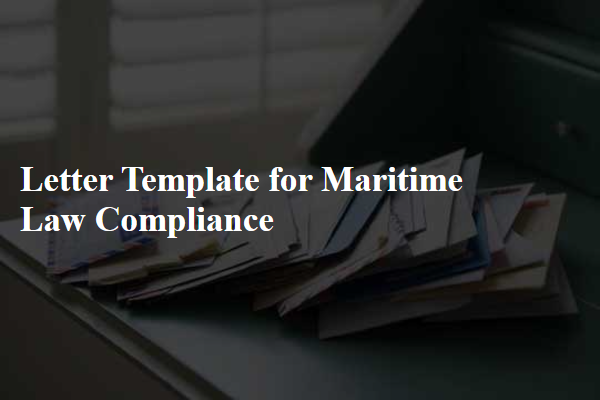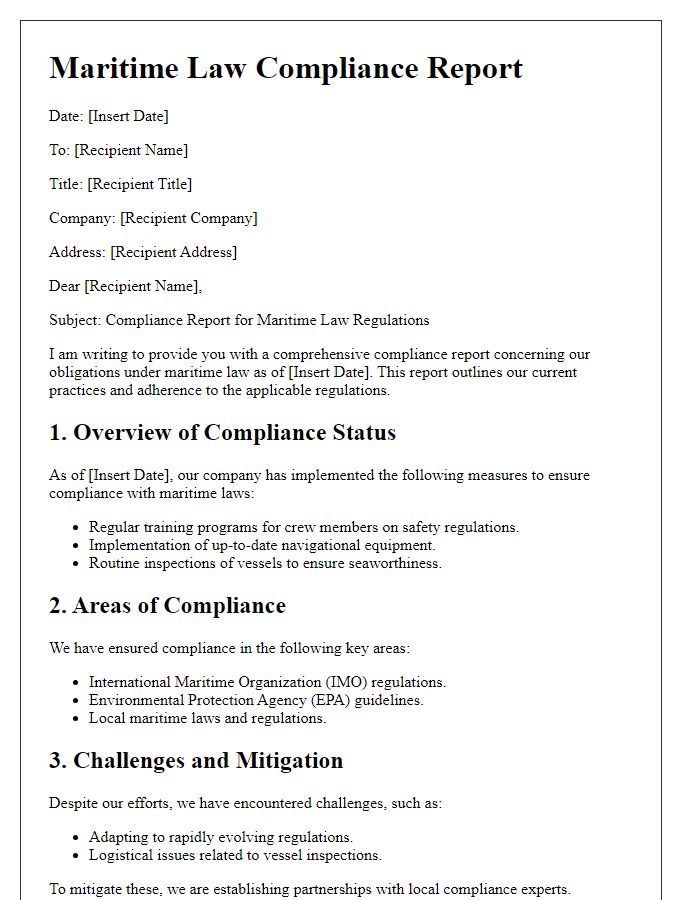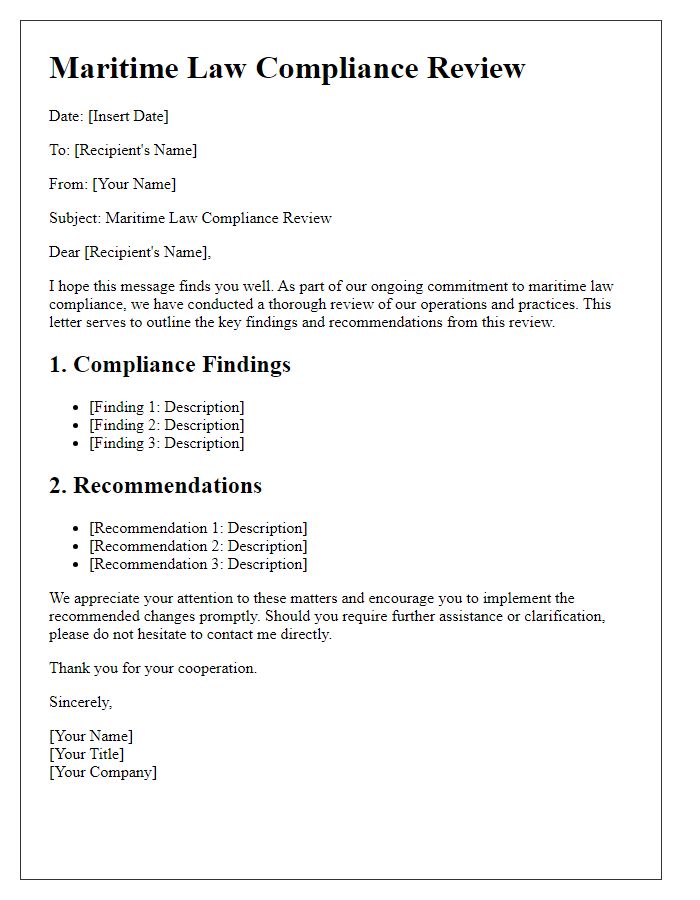Navigating the complexities of maritime law can feel daunting, but it doesn't have to be. In this article, we'll simplify the essentials of maritime law compliance, making it accessible and understandable for everyone involved in shipping and maritime operations. Whether you're a seasoned professional or just starting out, having the right tools and knowledge is crucial for smooth sailing in this intricate field. So, let's dive in and explore the key steps to ensure your maritime practices are compliantâread on to learn more!

Legal Jargon and Terminology
Maritime law compliance is crucial for ensuring safety and regulatory adherence on waterways, particularly in international shipping operations. Key elements include adherence to the International Convention for the Safety of Life at Sea (SOLAS) which mandates vessel safety equipment standards and operational procedures. Additionally, the Maritime Labour Convention (MLC) sets forth worker rights and welfare provisions for seafarers aboard ships registered in various jurisdictions. Compliance with the Oil Pollution Act (OPA) requires ship operators to maintain strict spill prevention measures, involving the implementation of Oil Record Books and contingency plans. Due diligence is essential for navigation under United Nations Convention on the Law of the Sea (UNCLOS), which governs territorial waters and maritime boundaries, safeguarding against illicit activities such as illegal fishing and piracy. Enhanced awareness of legal terminology, such as "negligence," "maritime liens," and "admiralty jurisdiction," improves clarity and compliance in maritime operations.
Regulatory Standards and Guidelines
Maritime law compliance involves adherence to regulatory standards and guidelines set by various maritime organizations. The International Maritime Organization (IMO), a specialized agency of the United Nations, plays a crucial role in establishing safety regulations for shipping. Compliance with the International Convention for the Safety of Life at Sea (SOLAS) is essential for ensuring vessel safety and protecting crew and passenger lives. National regulations, such as the Code of Federal Regulations (Title 46 in the United States), dictate operational standards for the maritime industry, including safety equipment inspections and crew training requirements. Additionally, the International Convention on Standards of Training, Certification and Watchkeeping for Seafarers (STCW) outlines training and certification criteria crucial for maintaining operational standards at sea. Regular audits and inspections ensure ongoing compliance with these comprehensive regulations, ultimately promoting safe maritime operations and environmental protection.
Contract Clauses and Obligations
Maritime law compliance requires careful adherence to specific contract clauses and obligations that govern shipping operations. Key elements include the International Maritime Organization (IMO) regulations, which establish safety standards for vessels operating in international waters. Contracts must specify the obligations of shipowners, such as maintaining seaworthiness and ensuring cargo safety during transport. Additionally, demurrage clauses outline penalties for delays in loading or unloading cargo at ports, which can lead to substantial financial losses. Compliance also entails upholding environmental regulations, such as the MARPOL treaty, which sets limits on pollutant discharges from ships, ensuring protection for marine ecosystems. Proper documentation, including bills of lading and crew agreements, must reflect these contractual commitments, facilitating smooth legal navigation in maritime operations.
Risk Management and Mitigation
Maritime law compliance involves a comprehensive framework for managing risks associated with maritime operations, particularly fishing industries, cargo transport, and shipping fleets. Risk assessments (qualitative and quantitative methods) identify potential hazards such as oil spills, vessel collisions, or crew shortages. Regulatory bodies like the International Maritime Organization (IMO) prescribe guidelines to ensure compliance with safety standards and environmental protection measures. Mitigation strategies include implementing International Convention for the Safety of Life at Sea (SOLAS) regulations and training crew members on emergency protocols. Continuous monitoring of compliance status and regular audits are crucial for adhering to maritime laws, enhancing safety, and minimizing liabilities under legislative frameworks.
Notification and Response Protocol
The Notification and Response Protocol for maritime law compliance involves a structured process for addressing incidents at sea. This protocol mandates immediate reporting of any maritime incidents, such as oil spills (typically exceeding 1,000 liters), accidents involving vessels (including commercial ships over 500 gross tonnage), or violations of safety regulations. Notifications must reach the relevant authorities, such as the Coast Guard or local maritime agencies, within a strict timeline of 24 hours post-incident. Responses must outline the steps taken to mitigate risks, including the deployment of response teams and equipment. Additionally, organizations must maintain comprehensive records of incidents, ensuring documentation is accessible for audits by regulatory bodies like the International Maritime Organization (IMO) and local enforcement agencies. Compliance with this protocol not only ensures adherence to international maritime standards but also protects marine ecosystems and navigational safety.













Comments